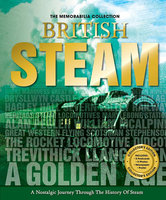New, Quality Gift Books - 50-90% off - over 2500 titles
Your basket is empty.
Categories Last Chance to buy! GWR ENGINEERING WORK 1928-1938
GWR ENGINEERING WORK 1928-1938
Book number: 92962
Product format: Hardback
In stock
Bibliophile price
£6.00
Published price
£28.95
Customers who bought this product also bought
|
HERITAGE DIESELS: The Peaks
Book number: 93245
Product format: Paperback
Bibliophile price
£2.50
Published price
£9.95
|
DEATH IN THE AIR
Book number: 93014
Product format: Hardback
Bibliophile price
£5.00
Published price
$27
|
SONS AND SOLDIERS
Book number: 92610
Product format: Paperback
Bibliophile price
£4.50
Published price
£12.99
|
|
FIGURING OUT THE PAST: A History of The World
Book number: 94204
Product format: Paperback
Bibliophile price
£5.00
Published price
£10.99
|
|
MEMORABILIA COLLECTION: British Steam
Book number: 94080
Product format: Hardback
Bibliophile price
£6.00
Published price
£17.99
|
Browse these categories as well: Last Chance to buy!, Transport














